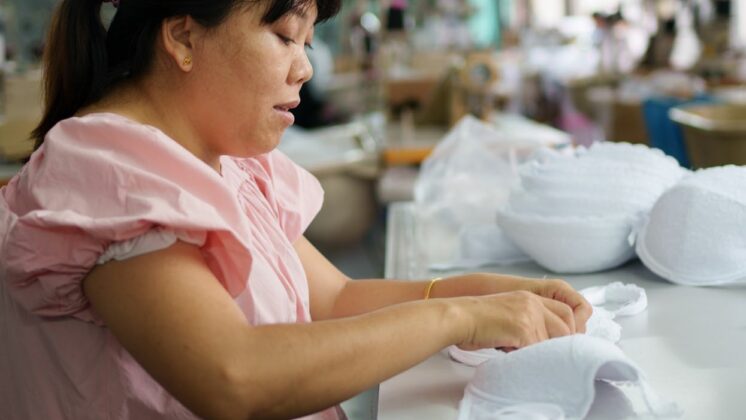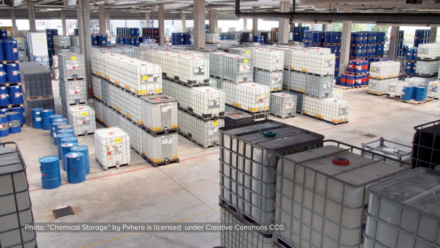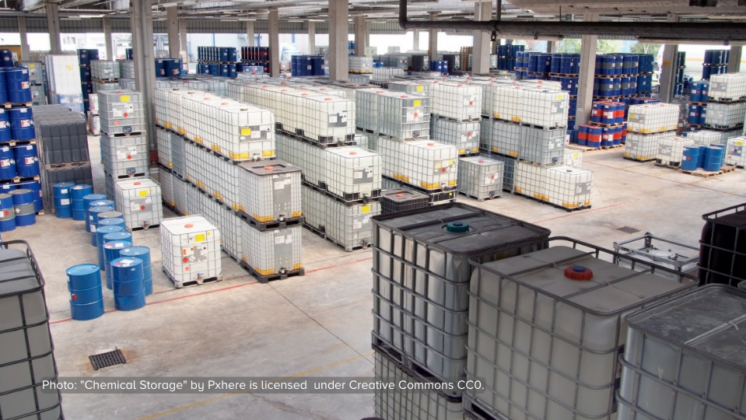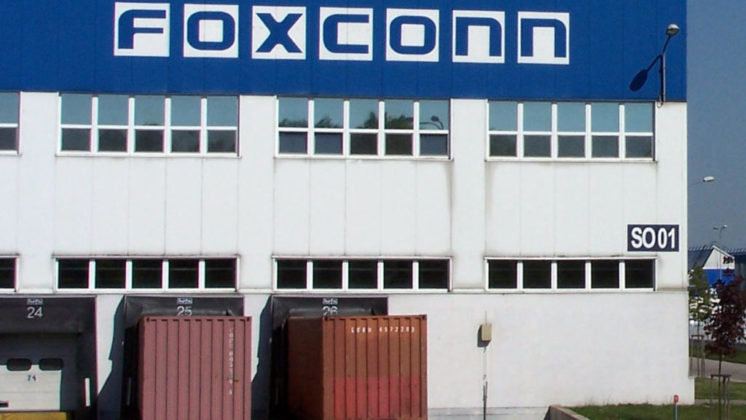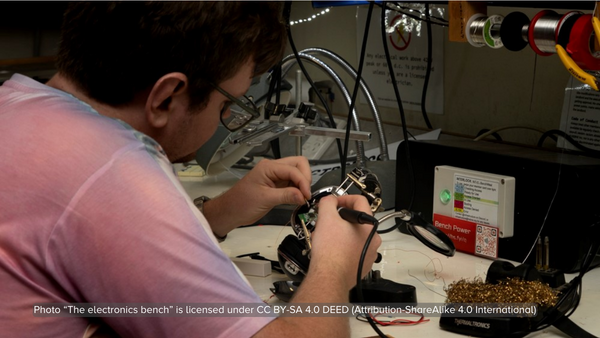Industrial robots are being put to work on a massive scale in China. Taking the case of electronics giant Foxconn, Jenny Chan considers what an automated future holds in store for human workers
China is going all out for automation. The country has become the world’s leading buyer of industrial robots – and is increasingly manufacturing them at home. The government shares and actively pursues its vision of ‘Replacing Humans with Robots’ with mega-corporations, as it seeks to squeeze out low-end industries (plastics, toys, furniture, garments and the like), while offering subsidies and bank loans to higher value industries like electronics, automobiles, infotech and biotech.
The national programme ‘Made in China 2025’ plans to transform the ‘world factory’ into a strategic base of ‘intelligent’ manufacturing. Productivity per worker must rise – which often translates as fewer jobs in industry. In the city of Dongguan, which has a $30-million annual fund to boost firms’ productivity, 87,000 workers were replaced by robots between 2014 and 2016. In Zhejiang province, two million lost their jobs between 2013 and 2015.
On a roll
What this robotic future may mean for industrial workers can be understood by looking at the country’s largest exporter of high-tech consumer electronics and the world’s largest electronics assembler – Taiwanese-owned Foxconn Technology Group. Foxconn gained worldwide notoriety for poor working conditions in its factories that allegedly led to a spate of worker suicides in 2010. The tragic loss of 14 lives did not seem to impact the industrial empire – the company’s fortunes have been on a roll. After reaching 100,000 employees in 2003, Foxconn expanded by leaps and bounds to more than 700,000 in 2008 and proved resilient during the global economic downturn, continuing to expand its global labour force, which reached a million in 2011 and 1.3 million in 2012.
In the production process, workers occupy the lowest position, even below the lifeless machinery
Then comes the turning point: in 2015 Foxconn’s total labour force dropped back to around a million, and by the end of 2016 further still to 873,467. Meanwhile, its annual profits soared, reaching an unprecedented $4.9 billion.1 In revenue terms, Fortune Global 500 ranks Foxconn – also known as Hon Hai Precision Industry – 27th, hot on the heels
When it replaced 60,000 workers with robots in one factory, Foxconn boasted to the BBC that it is aligning itself with Beijing leaders who seek to upgrade the technological levels of Chinese workers: ‘We are applying robotics engineering and other innovative manufacturing technologies to replace repetitive tasks previously done by employees; and through training, also enable our employees to focus on higher value-added elements in the manufacturing process, such as research and development, process control and quality control.’ But technical skills training for a few aside, the majority of Foxconn workers continue to toil day and night with slim prospect of upgrading. Much more likely is the prospect of replacement by ‘Foxbots’.
Foxbots, known as ‘harmonious men’ in the company’s lingo, are the products of the Tsinghua-Foxconn Nanotechnology Research Centre. With long-term collaboration with Tsinghua University, by the end of 2016, Foxconn had registered 79,600 patents in cutting-edge areas of heat transfer, optical coating technology, electrical machinery, semi-conductor equipment and mobile computing services.1 It has risen from being an electronics contractor to a robot producer.
Foxconn’s founder and CEO Terry Gou is dreaming of fielding a comprehensive fleet of Foxbots. In January 2012, during a week-long planning workshop at its Taipei headquarters, Gou made senior executives watch the Hollywood film Real Steel, about boxing gone high-tech with human boxers replaced by steel robots. Gou was excited by this glimpse of the robotic future. His ambitions for the company extend far beyond low-margin manufacturing into smart cars, big data technology, medical and healthcare electronics, automotive battery technology, telecommunications services and retail e-businesses. In July 2014, as Foxconn opened a new production base in Guiyang, provincial capital of Guizhou in southwest China, he put it bluntly: ‘We don’t want to go back to traditional, labour-intensive jobs. Simple and boring… We want to rely on high technology. We want to depend on efficiency. Technology and efficiency are the new future.’

Beneath the machines
Meanwhile, human labour gets increasingly channelled into dead-end jobs, such as spraying, welding, pressing, polishing and printed circuit board assembly. They have become attendants to the Foxbots, which are quicker and more efficient than human beings.
Unlike England in the early 19th century, workers do not destroy machinery to protest against deskilling and displacement. But their resistance can be no less extreme than that of their predecessors in the satanic mills.
Foxconn worker Xu Lizhi ended his life on 30 September 2014. He was 24 years old. A native of rural Guangdong, his multiple attempts to find employment that would allow him to escape from the assembly line, such as a position as a librarian in the factory, had failed. There was to be no upgrade for him.
Xu was a gifted poet, and one of his poems speaks of the insignificance of human life when machines are the new lords and masters.
A Screw Fell to the Ground
— Xu Lizhi, 9 January 2014
A screw fell to the ground
In this dark night of overtime
Plunging vertically, lightly clinking
It won’t attract anyone’s attention
Just like last time
On a night like this
When someone plunged to the ground
Apple, for whom Foxconn is the biggest supplier, claims that it is dedicated to ‘educating and empowering supplier employees’, and highlights that ‘every workday should include opportunity and enrichment’. But one Foxconn worker viewed the opportunities very differently: ‘In the production process, workers occupy the lowest position, even below the lifeless machinery. Workers come second to, and are worn out by, the machines. But I am not a machine.’2
To accumulate human capital – a crucial element of the ‘Made in China 2025’ developmental plan – China’s leaders are expanding investment in vocational training. The official goal of China’s Ministry of Education for 2020 is to recruit 23.5 million students – that is, 50 per cent of the nation’s senior secondary student population – into three-year vocational programmes. But what if student interns are not learning any useful skills? Foxconn used 150,000 of them during the summer of 2010 alone. When the government mandatory internship programme is manipulated by profit-maximizing companies (and their global buyers) as ‘a vehicle for channeling youths into the precariat’,3 the robotic future of China and the world will lead to an undesirable place.
Meanwhile, those who are losing their jobs to automation or fleeing the worsened work conditions as a result of it, are seeking their luck in China’s swelling service sector. Unfortunately, ‘informal’, low-tech and low-end service sector workers are struggling to make a living wage. By contrast, a small elite of knowledge workers such as IT professionals and creatives receive growing premiums in a digital age. The polarization of labour deepens, with non-standard work arrangements (temporary, contract, and part-time work) increasingly becoming the new norm.
Jenny Chan is an assistant professor of sociology at Hong Kong Polytechnic University and an advisor at Hong Kong-based Students & Scholars Against Corporate Misbehavior (SACOM).



